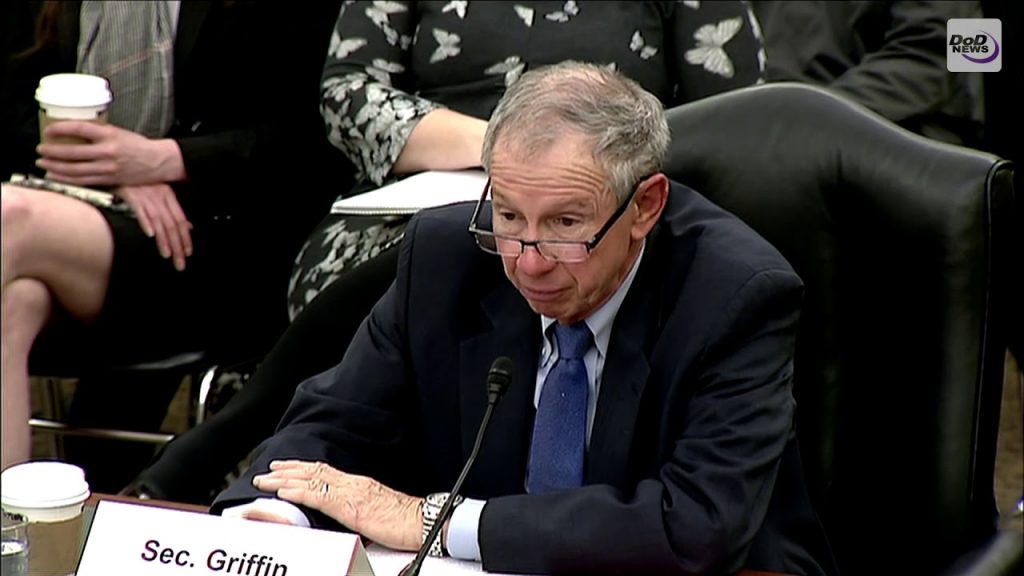
WASHINGTON: Rumors are swirling in Pentagon circles and on Capitol Hill that Mike Griffin, undersecretary of Defense for research and engineering (USDR&E), may be the next DoD manager with space-related responsibilities to step down — or be pushed out.
“It is clear that there are problems in Griffin’s office,” said one Pentagon insider, “and rumors are flying that he may be on his way out.”
A DoD spokesperson would not comment today, saying: “I have nothing to provide on that.”
The rumors are fed by what observers and Pentagon insiders are saying is ongoing disfunction within Griffin’s shop, which oversees the Defense Advanced Research Projects Agency (DARPA), the Missile Defense Agency (MDA), the fledging Space Development Agency (SDA), and the Defense Innovation Unit (DIU), as well as the military’s science and technology efforts. Sources say the internal problems include what they say is Griffin’s sometimes erratic decision-making, as well as aggressive efforts by his deputy, Lisa Porter, to block and tackle for him with staff and the rest of the department.
The problems, which include push-back on Griffin’s plans for both SDA and MDA on the Hill, are putting yet more pressure on DoD’s embattled leadership, by creating turmoil in DoD’s space acquisition strategy, according to a half-a-dozen well-placed sources.

Acting Defense Secretary Patrick Shanahan stepped down June 18 (as announced in a surprise tweet from President Donald Trump) due to personal issues in his past that came to light in the run up to his confirmation. Shanahan, as deputy Defense Secretary, led the effort to create a Space Force and revive Space Command. Trump announced he intended to nominate Army Secretary Mark Esper as Defense Secretary within days of Shanahan’s step down. (Esper has focused on Army ground forces and has stayed blessedly untouched by the space debates).
After only four months on the job, SDA director Fred Kennedy stepped down June 19 — before he could be asked to resign. According to insiders, Kennedy and Griffin were at odds over Kennedy’s ambitious plans for SDA to move out sharply to partner with commercial companies to speed development of new types of space architectures, including a future constellation to look out for threats that might be hovering as far away as cislunar space. Griffin had instead wanted to stick with his original idea for a much less ambitious start up for SDA, focused on development of a constellation of small satellites in Low Earth Orbit (LEO) with a mix of communications gear and sensors designed to detect hypersonic weapons.
DoD on Monday named Derek Tournear, currently assistant director for space under Griffin, as SDA acting director under a dual-hat arrangement, reports colleague Rachel Cohen of Air Force Magazine.

Kennedy’s exodus came hard on the heels of that of Chris Shank, head of the Strategic Capabilities Office (SCO). Griffin intends to transfer SCO to DARPA and Shank opposed the move, so his resignation was requested. Griffin is going ahead with the transfer despite opposition on both sides of Capitol Hill, as well as push back from senior military commanders and the Joint Staff. The naysayers argue that SCO, which has been seen as the lead Pentagon office for taking advanced technologies and getting them into the hands of troops quickly, does not fit with DARPA’s more far-out research mission.
Both sides of Capitol Hill have expressed skepticism about SDA. It’s Shanahan’s brain child, as part of his plan for an overarching reorganization of Pentagon space management. In particular, the House Appropriations Committee (HAC), in its fiscal year 2020 bill cut funding, complaining that DoD has not been clear about the role of SDA within the Pentagon’s space management architecture, especially vis a vis the Air Force’s Space and Missile Systems Center (SMC). The Senate Armed Services Committee also cut funding and raised questions; the House Armed Services Committee granted DoD’s budget request of $44.7 million but called for a number of studies.

